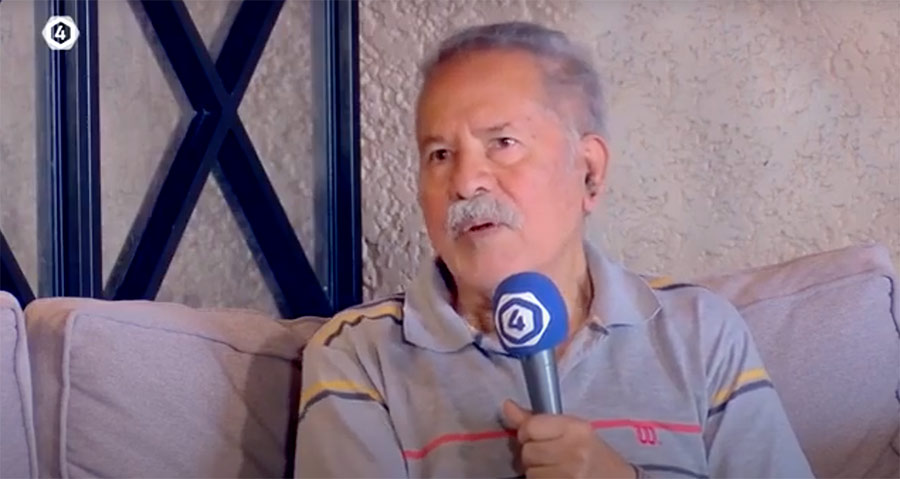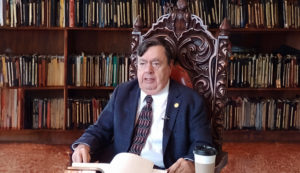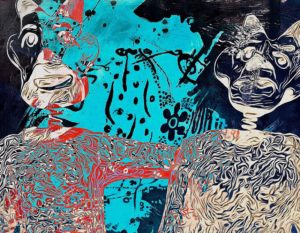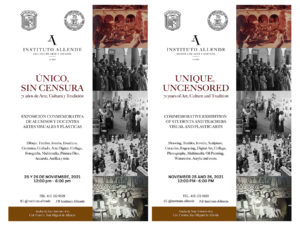
In recent days, the program Cada Día, of the state channel TV4Guanajuato, conducted an interview with the teacher Agapito Jiménez, who has oficially been a teacher of Mexican Traditional Weaving at the Instituto Allende.
Don Agapito Jiménez Rodríguez was born in 1949, in a community called El Palmarito, near Pozos, in the municipality of San Luis de la Paz. From the age of six, Agapito began to help in the work in the fields, in harvest, weeding plots, in addition to taking care of the sheep. He did not like taking care of animals, so he went to work elsewhere. One fine day, when he was nine years old, he decided to leave his home to come and live in San Miguel de Allende with his grandparents, who lived on 20 de Enero Street, in Colonia San Antonio. One of his uncles worked at Instituto Allende as a gardener and told him that they were looking for young people who would like to learn weaving and Agapito decided to give it a try, it was the year 1964.
He started by choosing wool, separating the short and dirty wool. At first they did not pay him and his only gain was learning. As he was a quick learner, they began to teach him how to wash wool, dry it and prepare it for carding. The carding process was taught to him by Don Ángel Chavarría, a man in his eighties, and by Don Miguel Licea, who was in his seventies. Then they started paying him. Then he began to spin with the distaff, to finally make the skein. Later he became an assistant to Don Porfirio López, who was the textile dyeer. He then learned to dye wool to make different color combinations.
““The master weavers encouraged me to draw: I made a first cover called Fish. Each of the teachers taught me for fifteen minutes. It was how I started to get practice. I practiced drawing hundreds of times to memorize it and be able to repeat it on several mats. I remember Don Enrique Fernández Martínez, founder of the Instituto, who would arrive and stop at a corner of the workshop; He would stay watching everyone and, if he saw something, he would tell the person in charge of the staff and tell him what he wanted to see of each of the things he observed. His wife, Mrs. Nell Harris, was very energetic, but I later learned a lot from her about how to work. I was an assistant to Mr. Stirling Dickinson, who was the first director of the Instituto Allende, and he gave me the opportunity to grow. He always used, in a nutshell, to say what he expected of each person. He said to me: “Never be late, never drink at work, never say no and never miss work. And in all the years that I have worked at the Instituto, I never did any of that.
Students from all over the world come year after year to the Instituto Allende to take weaving classes with Don Agapito, who has become an icon of traditional Mexican weaving in San Miguel de Allende.



